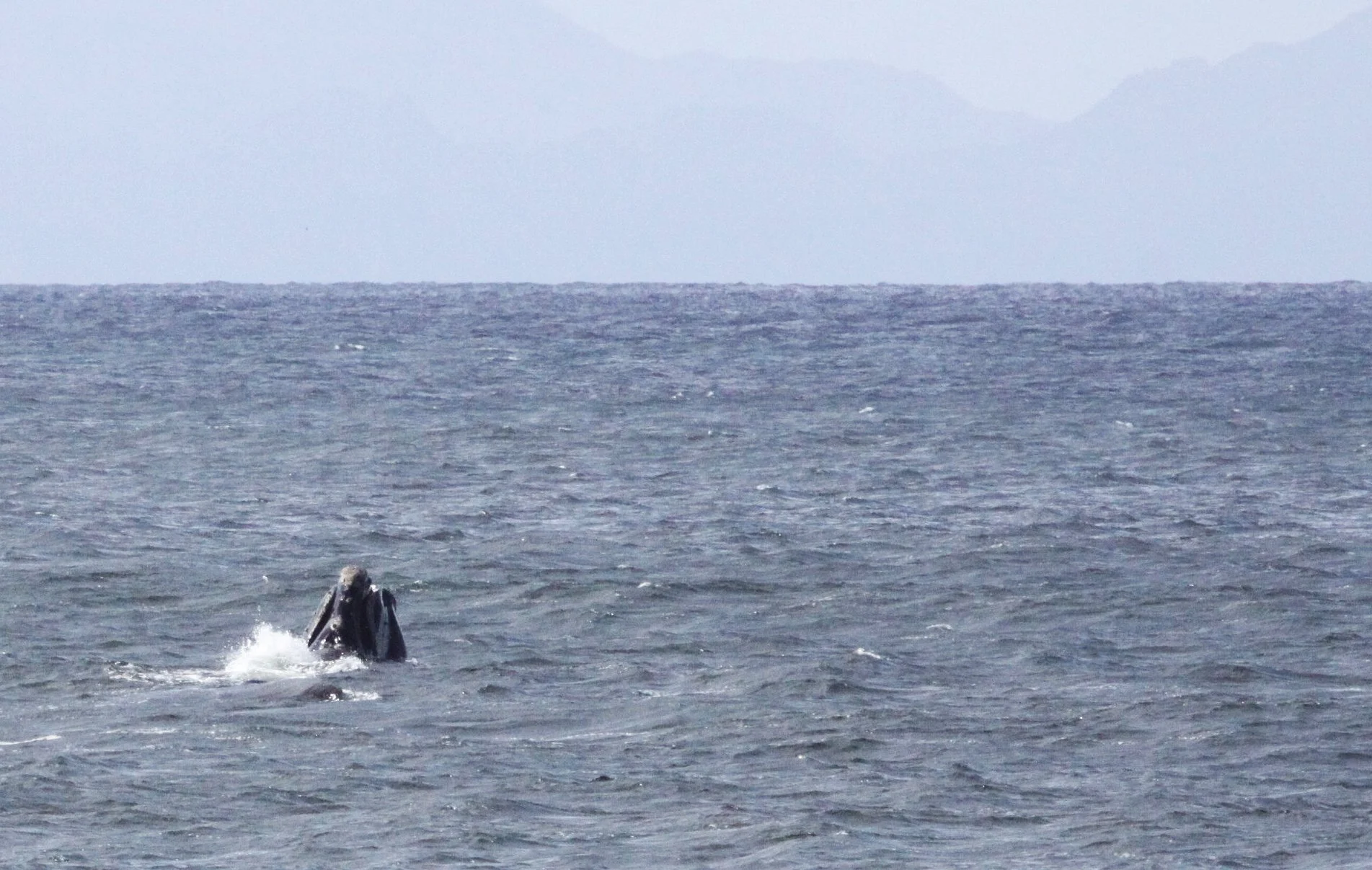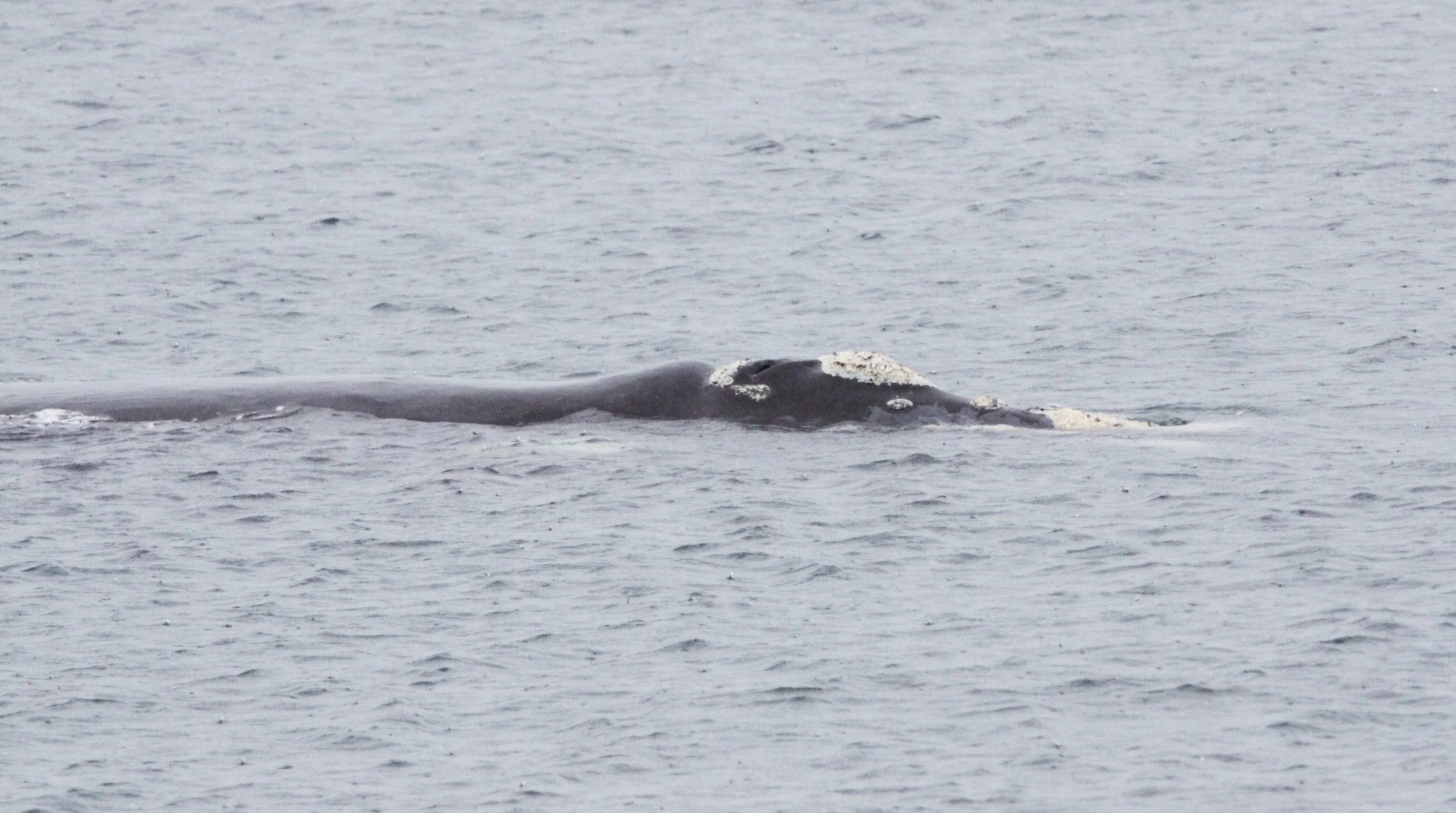The Southern Right whale (Eubalaena australis) is a baleen whale, one of three species classified as right whales belonging to the genus Eubalaena. Southern right whales inhabit oceans south of the Equator, between the latitudes of 20° and 60° south.[5] In 2009 the global population was estimated to be approximately 13,600.
Right whales were first classified in the genus Balaena in 1758 by Carl Linnaeus, who at the time considered all right whales (including the bowhead) to be a single species. In the 19th and 20th centuries the family Balaenidae was the subject of great taxonometric debate. Authorities have repeatedly recategorised the three populations of right whale plus the bowhead whale, as one, two, three or four species, either in a single genus or in two separate genera. In the early whaling days, they were all thought to be a single species, Balaena mysticetus.
The southern right whale was initially described as Balaena australis by Desmoulins in 1822. Eventually, it was recognised that bowheads and right whales were in fact different, and John Edward Gray proposed the genus Eubalaena for the right whale in 1864. Later, morphological factors such as differences in the skull shape of northern and southern right whales indicated at least two species of right whale—one in the Northern Hemisphere, the other in the Southern Ocean. As recently as 1998, Rice, in his comprehensive and otherwise authoritative classification, Marine mammals of the world: systematics and distribution, listed just two species: Balaena glacialis (all of the right whales) and Balaena mysticetus (the bowheads).
In 2000, Rosenbaum et al. disagreed, based on data from their genetic study of DNA samples from each of the whale populations. Genetic evidence now clearly demonstrates that the northern and southern populations of right whale have not interbred for between 3 million and 12 million years, confirming the southern right whale as a distinct species. The northern Pacific and Atlantic populations are also distinct, with the North Pacific right whale being more closely related to the southern right whale than to the North Atlantic right whale. Genetic differences between E. japonica (north pacific) and E. australis (south pacific) are much smaller than other baleen whales represent among different ocean basins.
It is believed that the right whale populations first split because of the joining of North and South America. The rising temperatures at the equator then created a second split, into the northern and southern groups, preventing them from interbreeding.
This gallery has images from Simon Town and the Southern Cape of South Africa.














































